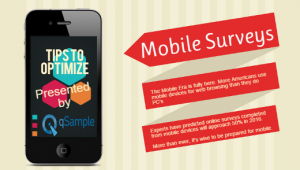There are many ingredients a small business can use to create consistent, sustainable growth. One underappreciated element is customer service. The relationship between customer service and business growth may seem unclear at first, but the most successful small business leaders know that effective service directly influences revenue and profits.
To grow top-line revenue and bottom-line profit, businesses need repeat customers. If salespeople are responsible for converting prospective and existing customers into revenue, it is customer service’s job to help by creating customer loyalty, which inspires word-of-mouth promotion and encourages more cross selling (i.e., customer lifetime value). Key to achieving this, particularly for small businesses, is a strategy of proactivity and consistent engagement. A robust contact center is essential to this approach.
As the designated interface between a business and its customers, here’s how contact centers can boost loyalty and accelerate growth:
Empowered Agents
The job of delivering effective customer service lies with contact center agents. When frustrated customers contact businesses, they expect their problems solved and their questions answered by a skilled representative as quickly as possible. In fact, more than 93 percent of consumers surveyed in NICE inContact’s CX Transformation Benchmark study said they expect companies to direct them to the quickest solution to their problems. Often, the difference between a skilled and unskilled agent is having all the needed tools like those found in a modern, unified contact center platform. For example, agents in outdated contact centers are forced to juggle multiple business systems and applications to research account history, billings and support recommendations. This prevents them from delivering effective service in a timely manner.
Agents today cannot be slowed down by multiple backend systems. What they need is an infrastructure that has the breadth and depth of modern-day customer service solutions. That includes support for seamless access to contact center tools, customer relationship management data and other core business platforms all under a single portal. Every second wasted navigating various apps is a second added to average handle time – a key metric for not only measuring customer service success, but also for controlling costs
These are the types of considerations that contact center managers must make on a daily, weekly and monthly basis. As a result, managers are equally reliant on modern contact center systems. If managers are blind to gaps in service, then they cannot adapt and make necessary improvements. On a micro level, these gaps can result in a poor customer experience that loses a once loyal customer. Added up, this customer churn can hurt business growth. Best-in-class contact center software is designed to optimize the performance of customer service professionals.
Easier Customer Experience (CX)
Difficult or unpleasant experiences can be the difference between a loyal and former customer. According to NICE inContact’s CX Transformation Benchmark survey, more than eight out of ten consumers are very likely to switch brands if they have had a bad customer experience. Today, digital technologies have heightened customer expectations. The rise of mobile, social media, AI bots, sentiment analytics and more has introduced consumers to a new age of customer service where businesses are accessible at all times. A digital-first contact center meets the needs of digital-first customers who are no longer content with voice-only access and live-agent support during regular business hours.
There was a time when smaller businesses could get away with the old CX model – each interaction is infused with intimacy but without convenience. This strategy collapsed, however, when the competition started to mass-produce personalized experiences for each and every customer. To turn loyal customers into brand promoters and advocates, they need quality and consistent engagement. With first-class contact center platforms, smaller businesses can now maintain personal connections with customers while making it easier to resolve issues.
Maximized Lifetime Value
The Internet has shifted the power away from businesses in favor of the customer, making it incredibly convenient to purchase almost anything from anyone at any time. Building loyalty through proactive customer service is the only surefire method to retaining a customer. Customers who report high levels of satisfaction are more likely to remain loyal customers and they reward businesses they trust with ongoing patronage.
Because small businesses depend on revenue and cashflow, the lifetime value of a customer is paramount. In order to extract the most value from customers, businesses must be able to map each individual customer’s journey, using modern tools to make future touchpoints more personal and meaningful. A CX strategy that increases customer retention and spend will have an equal effect on a business’ financial health.
A company’s ability to connect with customers on their terms is integral to retaining them, paving a path for increased revenue. An underestimated strategy for sustainable growth is a digital-first contact center.
Business & Finance Articles on Business 2 Community
(18)







